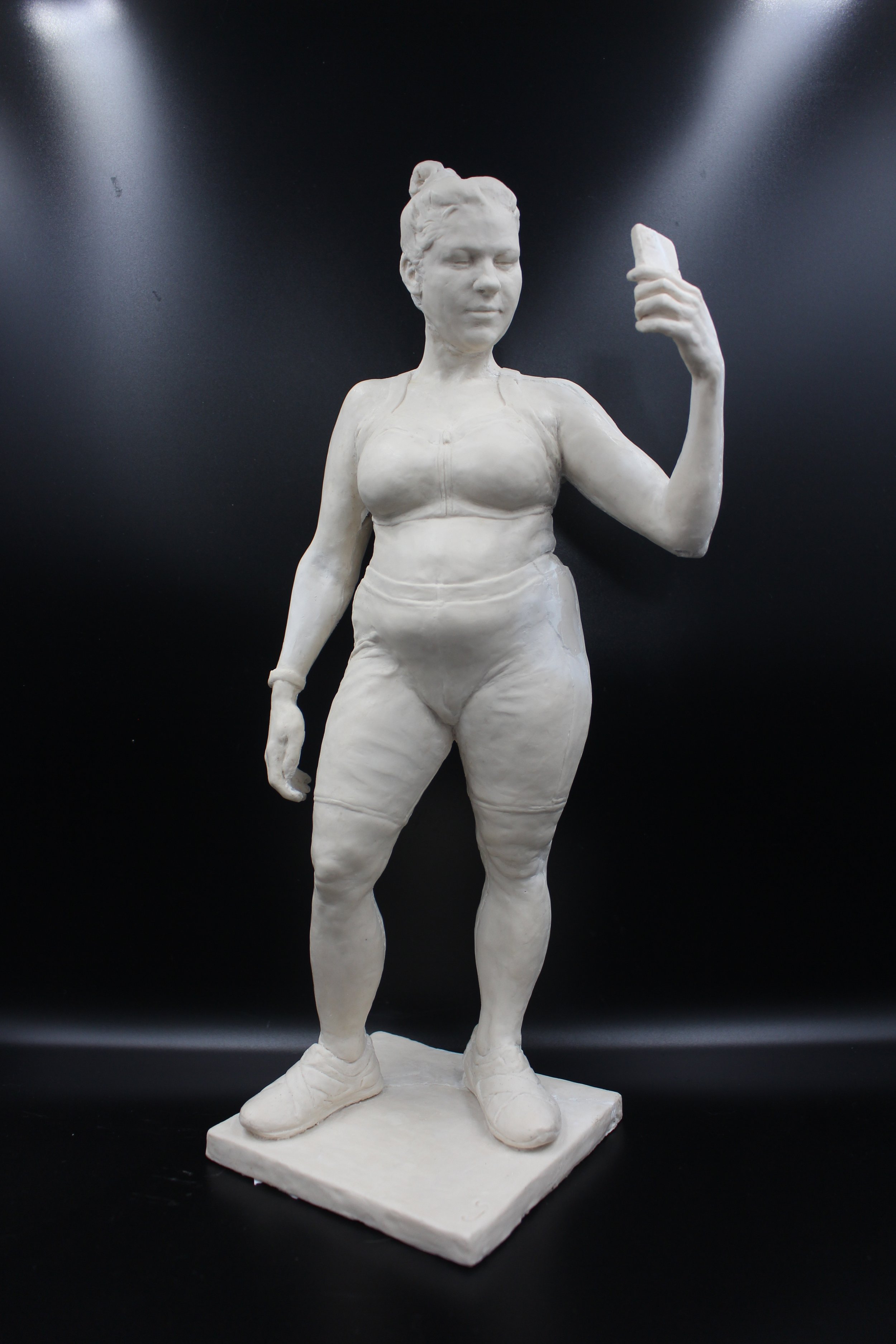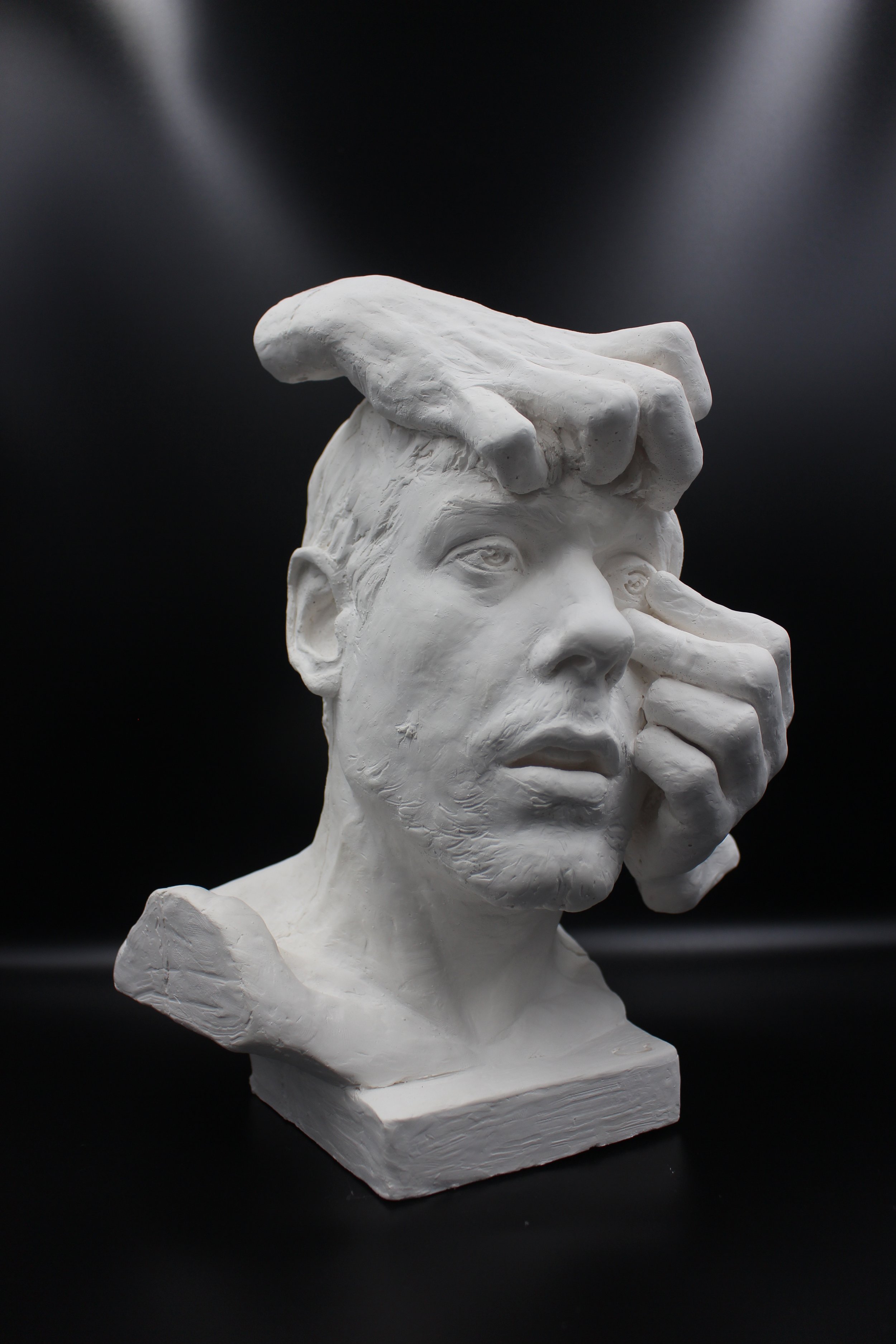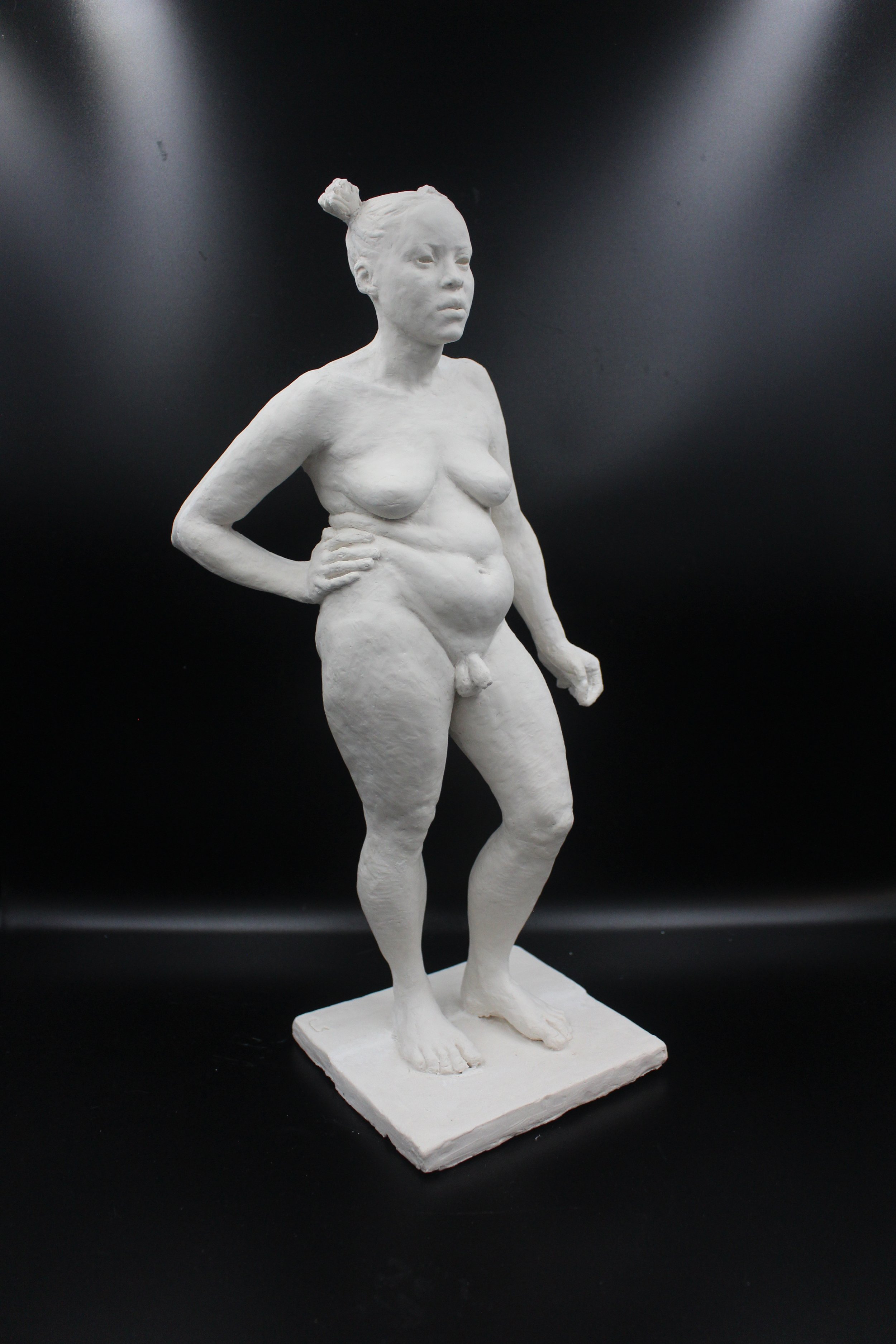ARTIST INTERVIEW: Callum Stannard
Please introduce yourself. When did your passion arise for sculpture? What inspired you to become an artist?
I'm Callum Stannard, a Sculptor. My parents met at art school, so I grew up in a creative household. I spent a lot of time drawing and building my own lego creations. There's never been a time when I've not been making things. I enjoy the satisfaction that comes with finishing a piece and being able to step back and say 'I made this'. That feeling is short lived though, so it's on to the next project in the hopes of sustaining that high.
What do you look for in a potential face/figure to sculpt?
I enjoy unusual or quirky faces. My favourite portraits to sculpt have been of people I'm well acquainted with; it's easier to add character to a face when I already have a feel for their personality.
Most of my figure sculptures are based heavily on my fiancée. I find her body incredibly exciting to sculpt and she can hold some of the most dynamic poses. Also, she's always available to model for me if I'm having trouble working something out in my head.
Where do you find your inspiration? How have your surroundings influenced your work?
A lot of my best ideas have come in the form of dreams. I keep a notepad next to my bed and I'll often wake up and jot some images down and then go back to sleep. Sometimes in the morning I'll look at the pad and have no memory of the things I drew and have trouble even deciphering them.
What is your process for creating one of your portraits? How do you establish which pose and expression to capture?
I try to set challenges for myself.
Smiles and other expressions that show the teeth are especially difficult. They look inherently creepy because in real life those poses are only held for a fraction of a second, while the sculpture is stuck in that position. I enjoy trying to find a way to mitigate the creepiness.
Similarly, eyes typically blink and look around but sculpted ones don't, so they often look dead. The easiest thing to do is to leave them hollowed out, but I wanted a challenge, so I made the eyes the focus of my sculpture 'Contact' and I sculpted a pose which is typically unblinking.
Contact
How does your choice of medium reflect the mood/narrative of the piece?
The modelling wax I use has a soft, slightly oily texture. I find it's especially good at describing flesh. Many of my projects have been about using aspects of classical sculpture to describe the bodies of real women. I don't want to idealise the body and I don't want them to be demure. Many have been sculpted to meet or return the stares of the viewer.
Who has been your favourite subject to sculpt and why?
I was anxious when I received my first commission, which is normal I'm sure; David Banks was a good friend to my father and had the intimidating title of Commonwealth Secretariat. I felt a lot of pressure to get it right and not to let him or my dad down. Fortunately, he was incredibly patient when much to my horror, the first sculpture I made of him collapsed while he was posing.
He's a larger than life character and I would love a chance to resculpt him and apply all the things I've learnt after ten years of experience.
Who is your favourite artist and why? Have any artists been influential to your work?
My father has been hugely influential. I remember him saying, when I was still focused on life drawing, 'if you can't do it with one line, don't do it all' which is a great lesson in confidence. I really appreciate Egon Schiele's work for that reason. His lines are beautiful.
At A-level, I met the sculptor James Webster, who introduced me to clay and working in three dimensions. Up to that point I'd solely been interested in drawing, and meeting him really changed my trajectory.
Currently, my favourite artist is Bernini. I recently visited Rome to see his work and I was amazed by the way he can seamlessly switch from describing soft flesh to flowing locks of hair all while using marble, a famously unforgiving material.
Thinking about your journey so far as an artist, what have been your greatest achievements? Have you endured any challenges?
Winning prizes for my portrait sculpture has been a highlight. The Society of Portrait Sculptors prize in particular, is judged by my contemporaries and so receiving their recognition feels like an achievement.
I found art school especially challenging. I was met with a lot of resistance to working figuratively, which is strange because when I was interviewed for the course, I brought a portfolio full of life drawing. They offered the most life drawing classes of anywhere, yet I was routinely pulled from the classes by my tutors.
I had to compromise a lot in order to get a passing grade. I remember that they insisted I melt one of my wax heads and then cast the puddle it left behind in bronze. That memory still makes me grumpy. Ultimately, it strengthened my resolve to do my own thing once I left.
My father died recently and I wanted to make a family portrait to memorialise him. The process of sculpting it and having to traipse through old photos of him was extremely difficult but it helped me grieve and now that the portrait is finished, I’m glad I did it. It acts as an aide to remember his character in a way that photos don’t do justice.
Why do you think art is important in society?
I spend a lot of time drawing at the National Gallery and I've come across a lot of people that choose to read the plaques without ever actually looking at the paintings themselves. It's easier to accept the consensus on a piece than risk forming and expressing an opinion of your own that other people don’t agree with. I think the reason modern art has become so experimental is that people are afraid to say what they really think. I try not to spell out or define my work. I think art should be whatever the piece means to the individual viewing it, and because of that it should be open to many different interpretations.
We can't know the thought process behind the artists that made cave paintings millions of years ago but we can still appreciate them. When I started bronze casting I was excited by the idea of leaving a similar legacy behind. Greek bronzes have survived thousands of years and perhaps mine will last that long too. It's something I think about more and more as with the doom and gloom of climate change.
Art is a chronicle of our history and it will be interesting to see what art stands the test of time.










